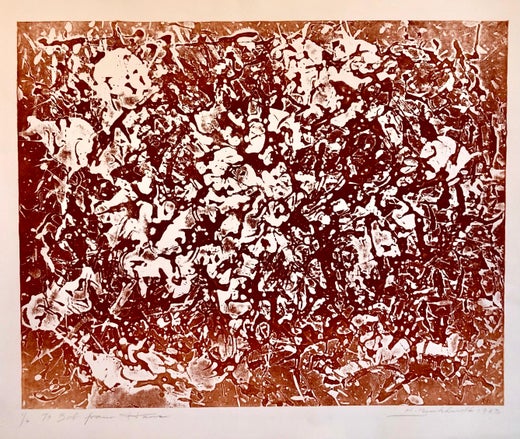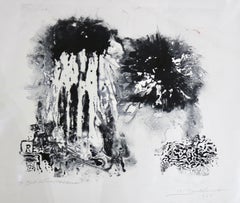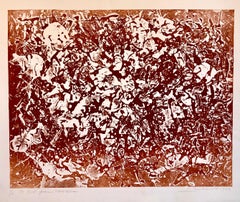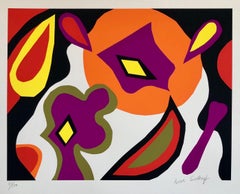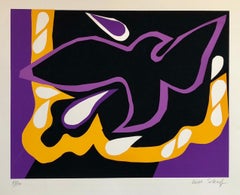Hans BurkhardtCalifornia Abstract Expressionist Linocut Lithograph Sepia Print Edition of 61983
1983
About the Item
- Creator:Hans Burkhardt (1904 - 1994, Swiss)
- Creation Year:1983
- Dimensions:Height: 20 in (50.8 cm)Width: 26 in (66.04 cm)
- Medium:
- Movement & Style:
- Period:
- Condition:
- Gallery Location:Surfside, FL
- Reference Number:1stDibs: LU3827038892
Hans Burkhardt
Hans Gustav Burkhardt was a Swiss-American abstract expressionist artist. He was born on December 20, 1904, in Basel. Burkhardt’s paintings of the 1930s are part of the genesis of American abstract expressionism. He moved to Los Angeles in 1937 and represented the most significant bridge between New York and Los Angeles. He brought with him many of the nascent ideas of abstract expressionist painting that had been swirling among New York's artists, foremost among them, Arshile Gorky and Willem de Kooning. Working independently in Los Angeles, Burkhardt's experimental investigative approach parallelled and in many instances anticipated the development of modern and contemporary art in New York and Europe. His unique role as an important American painter is affirmed by the constant interest and continuing reassessment afforded his work. In 1992, Burkhardt was honored as the recipient of the Lifetime Achievement Award by the American Academy of Arts and Letters. His works are displayed across many museums, including the British Museum, Metropolitan Museum of Art, Whitney Museum of American Art, Los Angeles Museum of Contemporary Art and Norton Simon Museum. Burkhardt died on April 22, 1994, in Los Angeles.
You May Also Like
1980s Abstract Expressionist Abstract Prints
Handmade Paper, Lithograph, Linocut
1990s Abstract Expressionist Abstract Prints
Lithograph, Screen
Mid-20th Century Abstract Expressionist Abstract Prints
Lithograph
Mid-20th Century Abstract Expressionist Abstract Prints
Color, Lithograph
Mid-20th Century Abstract Expressionist Abstract Prints
Lithograph
Early 20th Century Abstract Expressionist Abstract Prints
Ceramic, Paint, Lithograph
Mid-19th Century Abstract Expressionist Abstract Prints
Lithograph
20th Century Abstract Expressionist Landscape Prints
Engraving, Lithograph
Mid-20th Century Abstract Expressionist Abstract Prints
Lithograph
Mid-20th Century Abstract Expressionist Abstract Prints
Lithograph
More From This Seller
View All1980s Abstract Expressionist Abstract Prints
Lithograph, Linocut
1980s Abstract Expressionist Abstract Prints
Lithograph, Linocut
1970s Abstract Expressionist Abstract Prints
Lithograph, Screen
1970s Abstract Expressionist Abstract Prints
Lithograph, Screen
1980s Abstract Expressionist Abstract Prints
Mixed Media, Tissue Paper, Lithograph
20th Century Abstract Expressionist Abstract Prints
Etching, Lithograph
